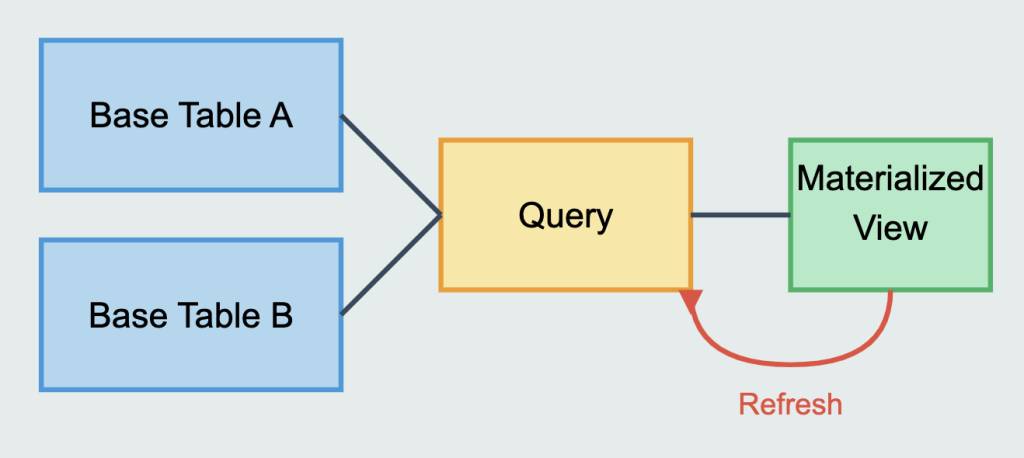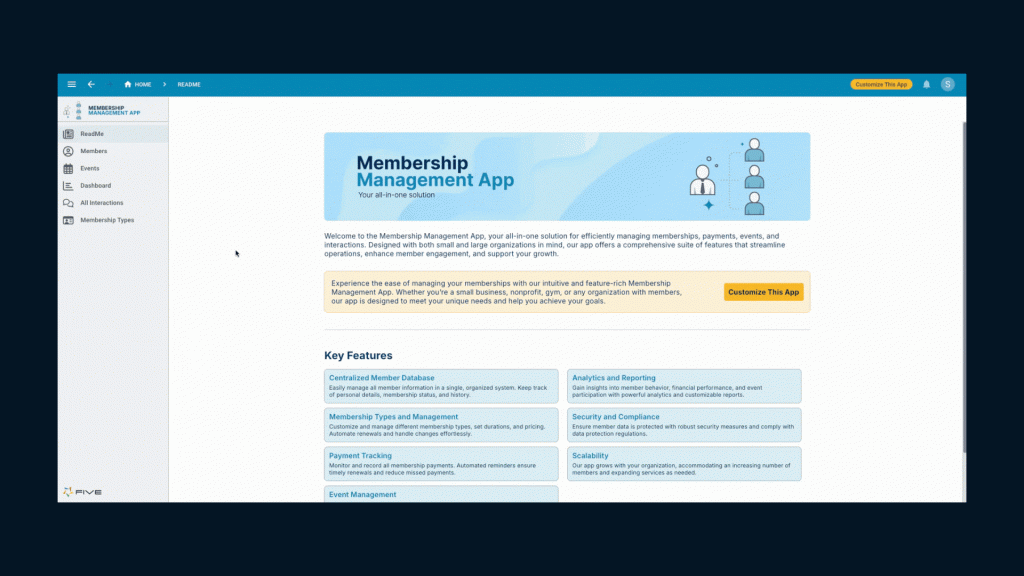A Comprehensive Guide to Materialized Views in MySQL
Materialized Views in MySQL: Can It Be Done?
Materialized views are an essential feature in database management that significantly enhance query performance and data retrieval efficiency. While MySQL doesn’t support materialized views natively like some other database systems, there are effective workarounds to achieve similar functionality. This article delves into what materialized views are, their benefits, and how you can implement them in MySQL.
Here’s What You Can Do With Five
Create and Model a SQL Database ✅
Write or Build SQL Queries ✅
Visualize Queries as Charts or in Dashboards ✅
Add CRUD Permissions to Control Data Access ✅
Host Your Database Online ✅
“Five bridges the gap between SQL and the web,
allowing me to create full-stack applications almost entirely in SQL”
– Crag Jones, Database Administrator (DBA)
What Are Materialized Views?
A materialized view is a database object that contains the results of a query. Unlike a standard view, which generates results dynamically each time it is queried, a materialized view stores the query result data physically, thus improving performance for complex and resource-intensive queries.
Key Benefits of Materialized Views
- Materialized views store query results, reducing the need to repeatedly execute complex queries.
- They allow for faster data retrieval, which is crucial for large datasets and real-time applications.
- By caching query results, materialized views reduce the load on the database server.
Lets explain the concept of materialized views using this diagram:

- Base Tables: On the left side of the diagram, we have two rectangles labeled “Base Table A” and “Base Table B”. These represent the original database tables that contain the raw data.
- Query: In the middle, we have a rectangle labeled “Query”. This represents a query or set of operations that are performed on the base tables to derive a specific result set.
- Materialized View: On the right side, we have a rectangle labeled “Materialized View”. This is the key concept we’re illustrating.
A materialized view is a database object that contains the results of a query. Unlike a regular view, which runs the query each time it’s accessed, a materialized view stores the result set physically, like a table. This has several advantages:
- Performance: For complex queries, especially those involving large datasets or multiple joins, a materialized view can significantly improve query performance because the results are pre-computed.
- Data Warehouse and OLAP: They’re particularly useful in data warehousing and OLAP (Online Analytical Processing) scenarios where you might have complex aggregations or calculations that are expensive to compute on-the-fly.
- Arrows: The arrows in the diagram show the flow of data. The arrows from the base tables to the query represent the original data being processed. The arrow from the query to the materialized view represents the results being stored.
- Refresh: The curved arrow at the bottom labeled “Refresh” is a crucial part of understanding materialized views. Since the data in the base tables can change over time, the materialized view needs to be updated or “refreshed” periodically to reflect these changes. This refresh can be set to occur automatically at specific intervals, or it can be done manually when needed.
The trade-off with materialized views is between query performance and data freshness. They provide fast query results but at the cost of potentially having slightly outdated data between refreshes.
Implementing Materialized Views in MySQL
Although MySQL does not support materialized views natively, you can implement them using a combination of tables and triggers. Here’s a step-by-step guide on how to create a materialized view in MySQL:
Step 1: Create a Base Table
First, create a base table that will store the materialized view’s data.
CREATE TABLE materialized_view AS
SELECT column1, column2, aggregate_function(column3)
FROM base_table
GROUP BY column1, column2;Step 2: Set Up Triggers to Maintain the Materialized View
To ensure that the materialized view stays up-to-date with the base table, you need to create triggers for INSERT, UPDATE, and DELETE operations.
Insert Trigger
CREATE TRIGGER trg_after_insert AFTER INSERT ON base_table
FOR EACH ROW
BEGIN
INSERT INTO materialized_view (column1, column2, column3)
VALUES (NEW.column1, NEW.column2, NEW.column3);
END;Update Trigger
CREATE TRIGGER trg_after_update AFTER UPDATE ON base_table
FOR EACH ROW
BEGIN
UPDATE materialized_view
SET column1 = NEW.column1, column2 = NEW.column2, column3 = NEW.column3
WHERE id = OLD.id;
END;Delete Trigger
CREATE TRIGGER trg_after_delete AFTER DELETE ON base_table
FOR EACH ROW
BEGIN
DELETE FROM materialized_view WHERE id = OLD.id;
END;Step 3: Refreshing the Materialized View
Depending on your application’s requirements, you might want to periodically refresh the materialized view to ensure it reflects the most recent data. This can be done using a scheduled event or a cron job.
Example of a Scheduled Event
CREATE EVENT refresh_materialized_view
ON SCHEDULE EVERY 1 HOUR
DO
BEGIN
TRUNCATE TABLE materialized_view;
INSERT INTO materialized_view (column1, column2, aggregate_function(column3))
SELECT column1, column2, aggregate_function(column3)
FROM base_table
GROUP BY column1, column2;
END;Materialized Views with a Rapid Database Builder
While understanding SQL and executing efficient queries is crucial, building a complete database requires significant SQL knowledge. This is where rapid database builders like Five come into play.
In Five, you can define your database schema using MySQL or an external relational database such as MS SQL Server. Five provides a built-in MySQL database for your application, or lets you connect to a data source, including APIs or OData, and generates an automatic web UI, making it easier for businesses to interact with their data.
With Five, you can create forms, charts, and reports based on your database schema. This means you can build interfaces that interact with data fields.
Five also allows you to write custom JavaScript and TypeScript functions, giving you the flexibility to implement complex business logic. This is crucial for applications that require more than just standard CRUD (Create, Read, Update, Delete) operations.
Once your application is built, you can deploy your application to a secure, scalable cloud infrastructure with just a few clicks. This allows you to focus on development without worrying about the complexities of cloud deployment.
If you are serious about working with MySQL give Five a try.
▶️ Sign up for free access to Five’s online development environment and start building your web application today.
Considerations For Materialized Views in MySQL
- Storage: Materialized views consume additional storage space. Ensure that your database has adequate space to accommodate the materialized views.
- Maintenance: Regularly maintain and refresh materialized views to ensure data consistency and accuracy.
- Indexing: Use appropriate indexing on materialized view tables to further enhance query performance.
Conclusion
Although MySQL does not support them natively, you can effectively implement materialized views using tables and triggers. By understanding and utilizing materialized views, you can significantly enhance the performance and scalability of your MySQL database applications.
FAQs
Q: Does MySQL support materialized views natively?
No, MySQL does not support materialized views natively, but you can achieve similar functionality using tables and triggers.
Q: How often should I refresh my materialized view?
The refresh frequency depends on your application’s requirements. For real-time applications, you might need more frequent updates, while less frequent updates might suffice for batch processing applications.
Q: What are the alternatives to materialized views in MySQL?
Alternatives include using temporary tables, cache tables, or optimizing queries through indexing and query restructuring.



